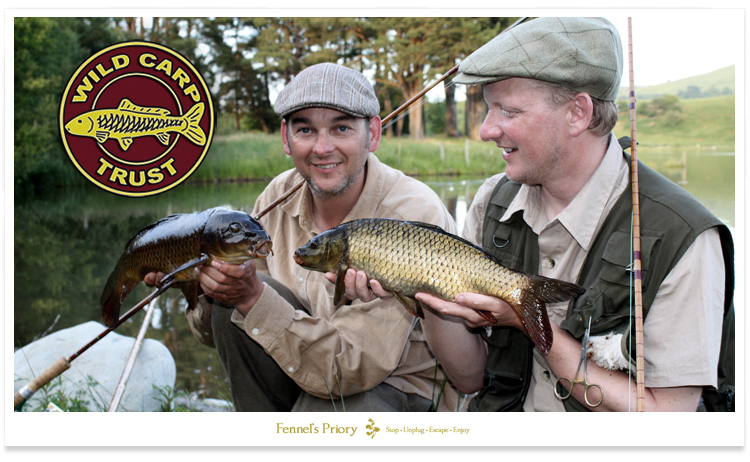
The Wild Carp Trust
Passion, heritage, hope
Esteemed conservationist Sir Peter Scott said, "The most effective way to save the threatened and decimated natural world is to cause people to fall in love with it again, with its beauty and its reality.” I've been thinking of this quote today while signing the advance orders of my new book Wild Carp, the publication of which is intended to spark affection for our oldest strains of carp.
The book, 31 years in the making, is my 'major work' and very much a labour of love. Actually, more than love – for this super-special type of fish – rather a deep and inextinguishable passion for everything that the wild carp represents.
I know what some folk will be thinking, "Blimey. 31 years? All that work for an insignificant and overlooked fish? Surely wild carp are just the runtish forms of their more evolved cousins? They're hardly relevant in today's world of 'big carp' and 'size is everything'?"
Well. I reckon that's the whole point. Ignorance of what's 'beautiful yet threatened' is what's nudging me into action. Wild carp are so rare, so precious, and yet so threatened, that they deserve our love and support. Hence my recollection of the Peter Scott quote, the early availability of my book, and the flurry of activity that's followed.
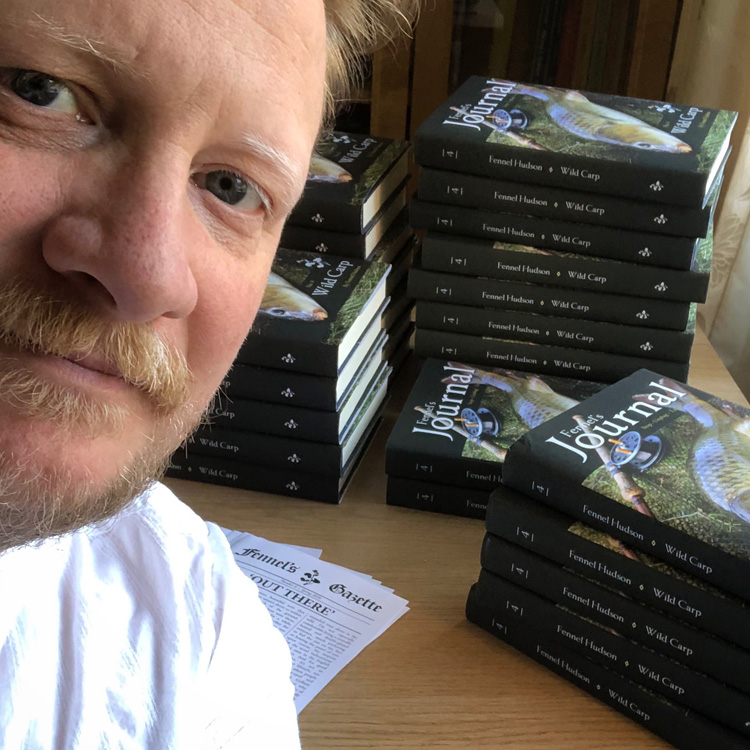
Saturday 25th April 2020: A day spent signing advance copies of my new book Wild Carp, ahead of its publication on 16th June. My 'coronabeard' is in situ, while I think about forming the Wild Carp Trust.
Wild carp: the source of our affections...
Wild carp (more accurately described as feral or wild-type carp in most waters*) are truly wonderful. They are our earliest strains of carp (medieval in origin within the UK and potentially much older overseas) and so are part of our living heritage. They live in out-of-the-way and often overgrown ponds (and sometimes rivers), and don't require heavy-handed tactics or tackle to catch them. Because of this, wild carp lend themselves perfectly to simple, sensitive, and heartfelt traditional angling tactics and tackle. It's even possible to catch wildies on on the fly, such is their synergy with the most gracefully sporting of angling tactics. So, as much as I like the mystery and challenge of big carp, wild carp have number one place in my affections.
*True wild carp (known as Sazan carp) live in the Danube and are critically endangered to the point of near-extinction due to habitat loss and cross-breeding with modern carp varieties. However, we are fortunate in having similar-looking fish wherever carp have been stocked long ago. Why? Because all varieties of carp, even the modern fish farm strains, revert to a wild-type form over successive generations of breeding in the wild. Eventually they take on the lean, torpedo-shaped and fully-scaled form of their ancestors. The longer the period of reversion (ideally hundreds of years), the leaner and more wild-like they become. And as they loose the couch-potato belly and 'Esméralda!' hunchback shoulders of modern king carp, they become smaller, fitter and more athletic – altogether a 'pound-for-pound' harder fighting and exciting sporting challenge for the angler. Always fully scaled, lean and tapering to the wrist of the tail, with a small lightly overhung mouth with dainty barbules around it, a bluntish head (sometimes chub-like in shape), and large oversized fins, they are sleek and beautiful equivalent of more modern strains. When you hook a wild carp, you'll be gobsmacked at the lightning speed of their runs and their relentless determination and stamina to avoid the net. Wild by name, wild by nature.
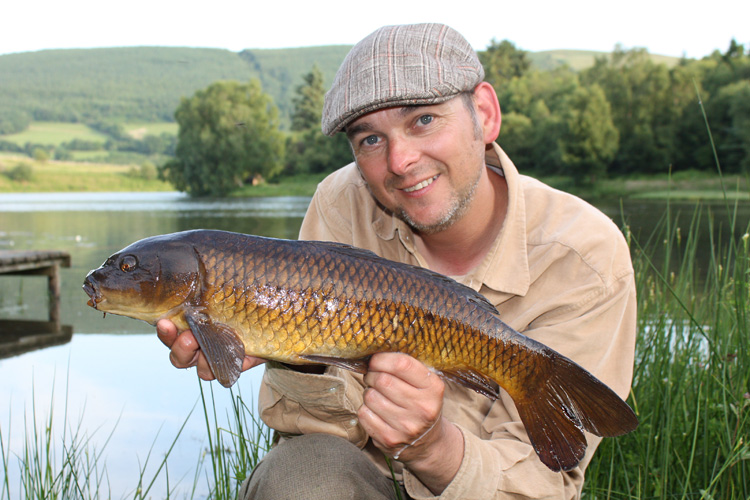
What all the fuss is about: a wild-like carp, known to anglers as 'wildies'. This one, caught by Stu Harris, came from Llyngwyn – the wild carp mecca in mid-Wales. (Note the small blunt-shaped head, small mouth and barbules, large fins for its size, and very sleek shape.)
...with very loyal wild carp enthusiasts
Wild carp have very loyal and spirited fans (such as me) whose enthusiasm for our oldest strains of carp is condensed into a sparkling diamond-like clarity and resilience that knows what we like and why we like it. And whilst the original wild carp have caught the scientist's eye, feral versions appeal to an anglers' artistic instinct with a "My God, these look and feel amazing!"
Hence why my book has been so positively received (the initial 'author's batch' of 50 copies sold out on the first day of sale). But mostly, I think, because the wild carp is the star of the book, not me, with it speaking directly to 'those who know'.
Collectively it would seem that we are in love with the wild carp's beauty, and care deeply for its reality. This presents an opportunity for us to use this passion to help conserve these ancient strains of fish.
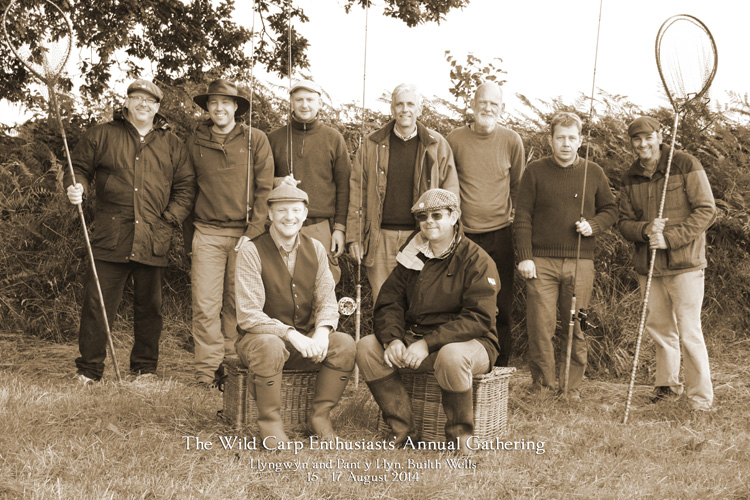
The first gathering of wild carp enthusiasts, led by Matt Tanner (seated, right) in 2014. By appreciating wild carp, we were following in the footsteps of the greats such as BB, Mike Winter and Chris Yates.
Making a difference for wild carp
Famous primatologist Jane Goodall said, "What you do makes a difference and you have to decide what kind of a difference you want to make.” Well, other than doing what I can to ensure traditional angling doesn't become a dusty relic in the corner of an antique shop somewhere, my diving passion is to help promote and protect wild carp – the rather fantastic golden-scaled fish that have inspired me since I was introduced to them aged fifteen, 31 years ago.
Wild carp, feral carp, wild-like carp, wild-type carp, wildies, 'real' carp, call them what you will. These fish are wonderful and priceless golden treasures, yet the oldest strains are so vulnerable. They could be wiped out so quickly by pollution, predation, or the foolish introduction of king carp to their waters.
Hence why my book (really, 'our' book) includes a chapter about wild carp conservation and a letter from me asking whether we could collectively use our skills, connections, resources and energy to do something for their benefit.
I figured that whilst many would be happy to just read about wild carp, a few dedicated souls would want to 'do their bit' to ensure the survival of these very special strains of carp. As staunch environmentalist Edward Abbey said, "It is not enough to understand the natural world; the point is to defend and preserve it."
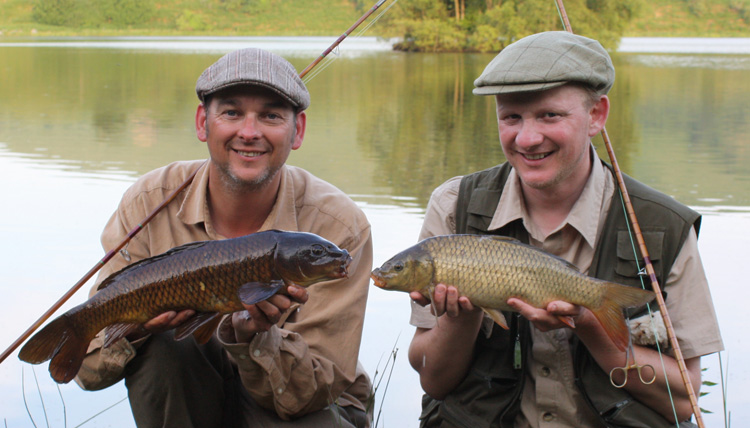
Old and young wild carp from Llyngwyn, one of the UK's oldest strains of carp – with fish stocked by monks in the Middle Ages. The carp on the left, a lean male fish, is probably older than Stu and I. The younger fish on the right, a female, gives us hope for the future. Let's ensure that strains of wild carp like this don't die out.
Wild carp: follow the golden thread
I inscribed most of the Wild Carp books with, "Follow the golden thread, it really does lead to the sum of our dreams." It refers to my favourite quote in the book, as featured on the back cover, though my hope is that the book serves as a call to arms for us to form a proper Wild Carp Trust.
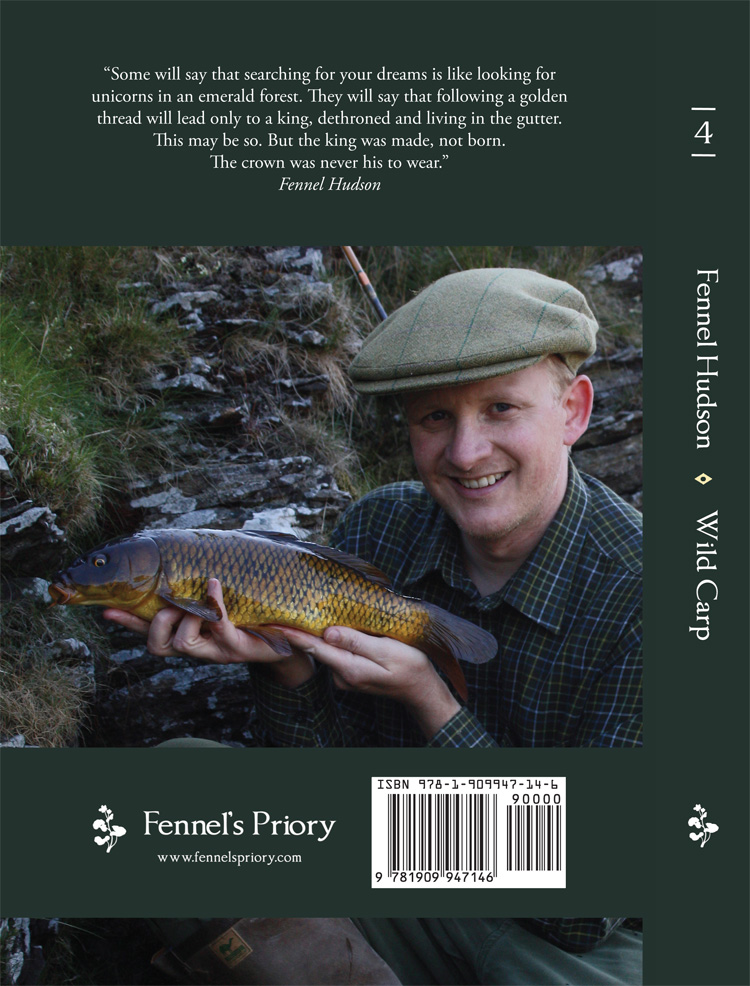
Rear cover of my Wild Carp book, with the quote about searching and fishing for wildies. The carp shown is my favourite fish so far from Pant y llyn, a Welsh mountain lake which I refer to as 'The Sanctuary'.
Forming a Wild Carp Trust
Of course, the idea of forming a Wild Carp Trust isn't new. It's a few years old. Matt Tanner, Stu Harris and I discussed it while fishing at Llyngwyn back in 2013. And a lot has happened since then.
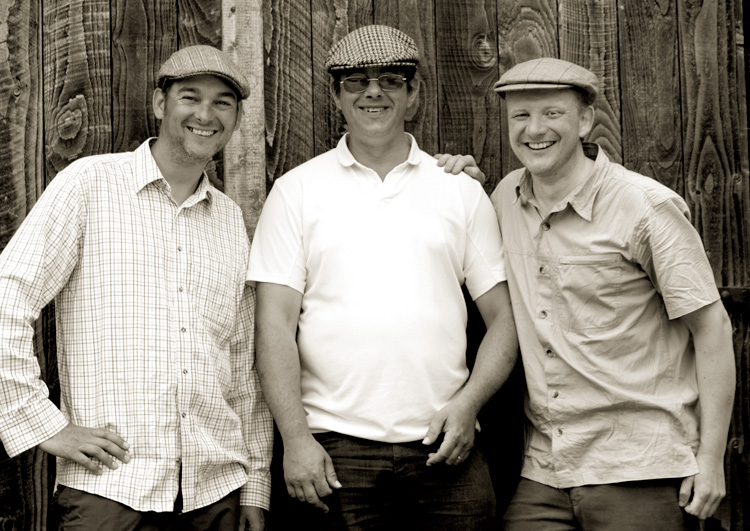
Monday 8th July 2013. "When it all began." Stu Harris, Matt Tanner and me celebrating a very good idea about conserving our precious wildies.
Matt has done a huge amount of work exploring the foundations and workings of a Trust, setting up the Wild Carp Trust Facebook Group, leading fishing trips to Welsh wild carp waters and ensuring those who control the fishing understand the importance and value of their fish stocks.
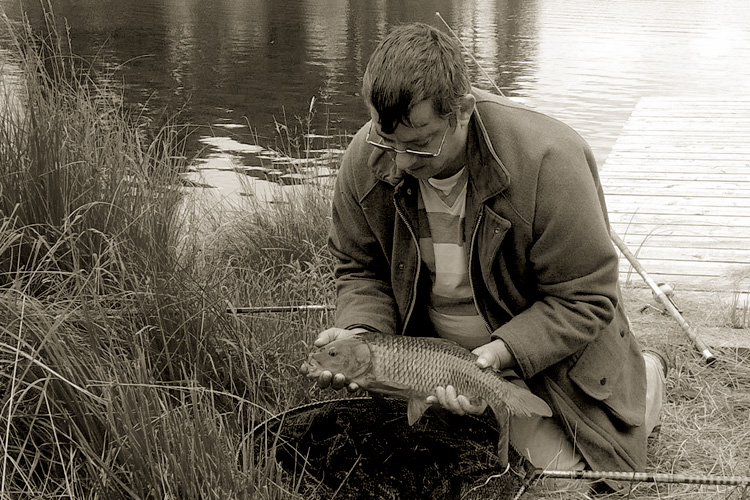
Matt is the perfect guide for anglers seeking to catch wild carp in Wales. He knows Llyngwyn intimately, having fished there for 40 years.
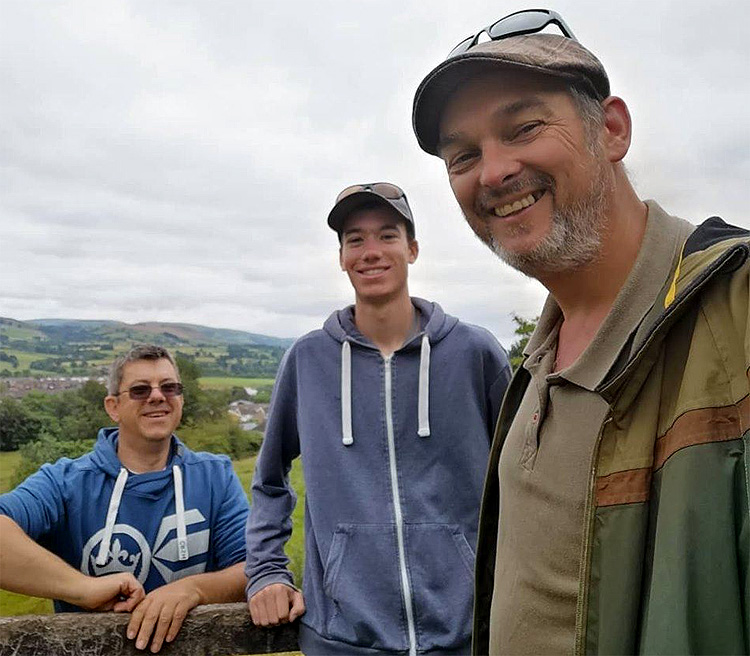
Matt and Stu helping Alex Smith from 'Carl and Alex' YouTube fame to film a video about Welsh wild carp.
Stu has written about wild carp and done a great job in producing and starring in several YouTube videos about them (you can see one here). He and I even recorded a professional feature-length film about wild carp, which sadly came to nothing when the production company confessed to losing the footage.
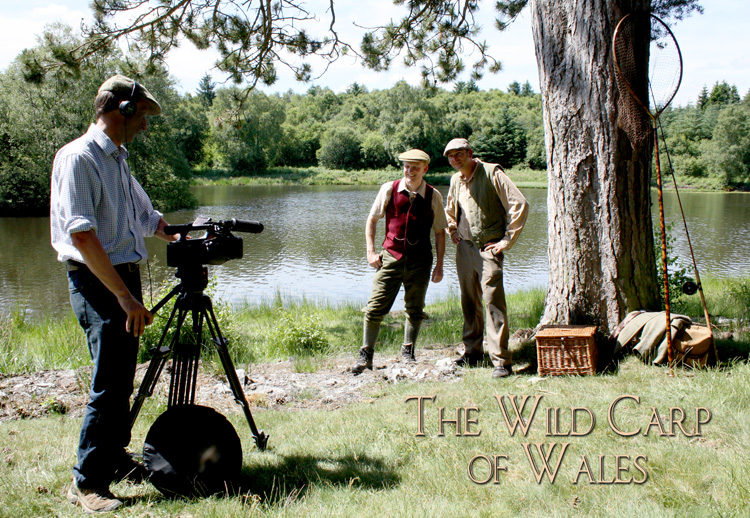
Stu Harris and me filming 'The Wild Carp of Wales', the lost project about our beloved wild carp. It would have been very, very special.
And I did my bit by writing two articles about Wild Carp in Classic Angling magazine and sharing an abridged version of my Wild Carp journal in magazine format.
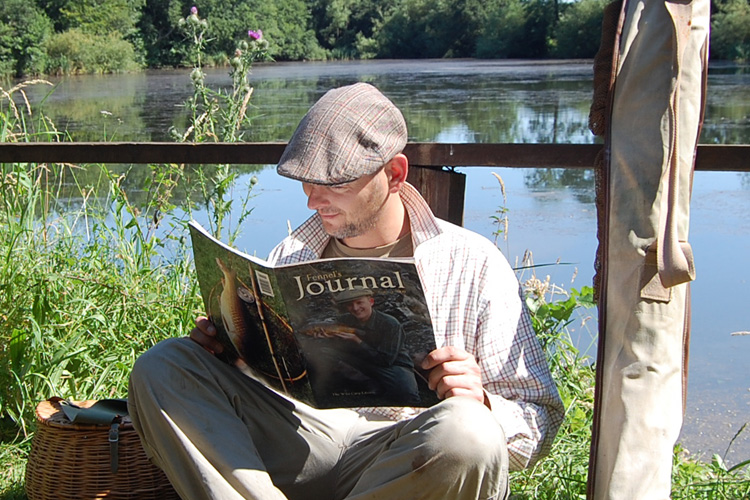
Stu read his magazine version of Wild Carp at Redmire Pool. This abridged collector's edition was limited to just 600 copies, of which the first 100 were embossed with the Fennel's Priory logo and signed by me. They're all out there, somewhere, with the signed ones being as rare as hen's teeth. The magazine covered the beginning and end of my quest. The much-extended book provides the full story.
A new home for wild carp
The biggest development, that gave me the nudge to publish the book and seek to 'make it happen' for the Wild Carp Trust, is that after seven years of searching, I have finally secured – thanks to our friend Steven Murgatroyd – a lake where we can stock and preserve wildies. This one-acre pool is to be managed as a nature reserve and occasional fishery for a small syndicate, and as a venue from which we may promote** wild carp in articles, blogs and films.
**Whilst the conservation project is to be promoted, the location of the lake is to be kept ultra-secret. We can’t afford for it to be poached, polluted, or stocked with king carp by someone who doesn’t share our views.
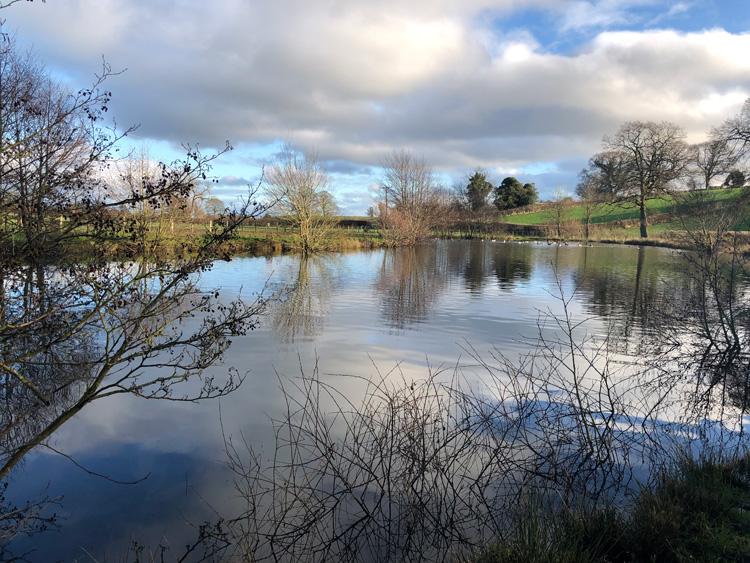
Our proposed wild carp reserve, one acre of spring-fed hope in a secret location on the England/Wales border.
The lake is known locally as 'Cowslip Pool' because it was formed when a farmer had to dig a cow free from a marshy corner of his field. The beast had sunk to its udders in boggy soil and couldn't be dragged free. Thankfully, the pool was formed before global consumerism took hold, else it might have been named McDonald's Pond. Why? Because of the classic joke: "What do you call a cow with no legs? Answer: ground beef." Well, I'm sure, being located on a livestock farm means the pool has a few 'patties' nearby. But the only golden arches we're keen to see are wild carp leaping in the sunlight.
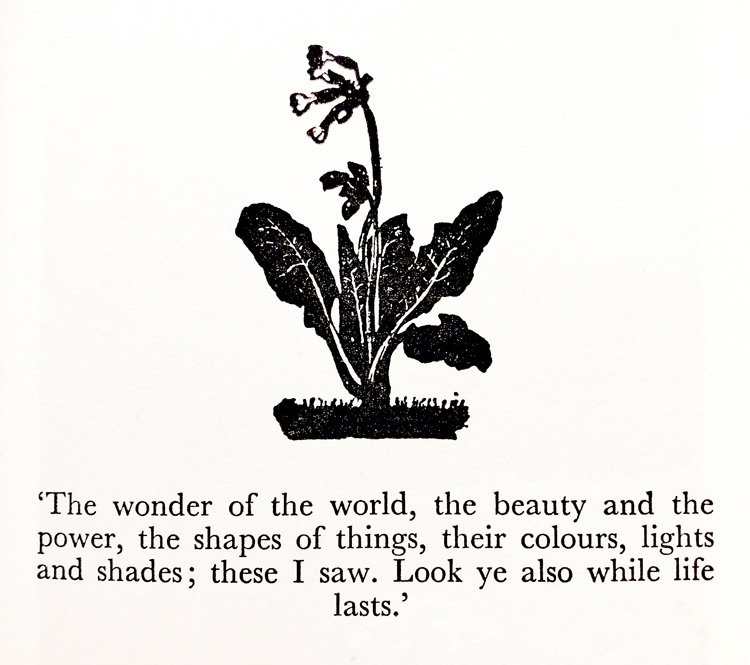
I like the name 'Cowslip' as it reminds me of BB's illustration that accompanies the inscription in his books. The first time I saw this was in his 'Confessions of a Carp Fisher' and, ever since then, have always thought of 'beauty and power' as referring to wild carp.
Our new wild carp lake is lily-studded and intimate, and has great potential. It has only ever contained non-breeding trout, stocked by a previous fly-fishing syndicate, and is small enough for us to manage yet big enough to fish while allowing space and time to drift between us. With a gift of love (guaranteed), care (planting and nurturing the banks), work (otter fence), and, of course, a thoroughly traditional and homely fishing hut to be built as a meeting place, we will have something to become the focal point for our efforts.
Pending the duration of our current lockdown, 2020 will be spent getting the lake ready and 2021 will see the stocking of wild carp and the discrete opening of the lake to a very privileged few.
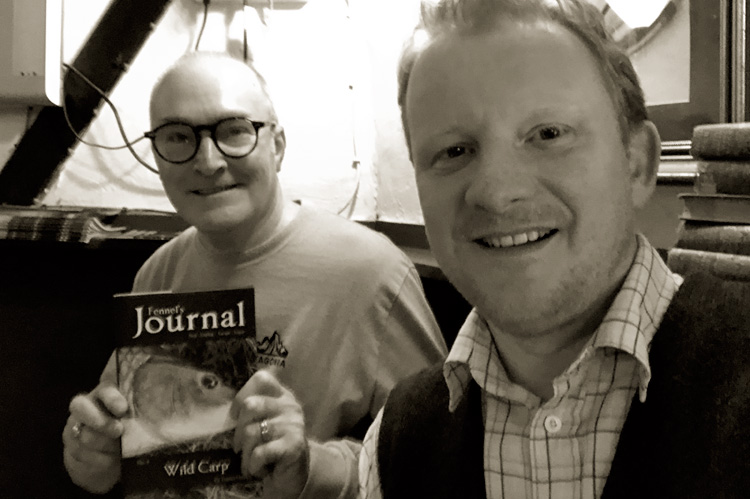
Sunday 16th February 2020. "The weekend of celebration." Steven Murgatroyd and I enjoying a pint in the pub after securing the tenure of Cowslip Pool, while perusing the proof copy of my Wild Carp book that arrived the day before.
The Wild Carp Trust
It occurred to me that a proper organisation, funded through memberships and donations, managed professionally and existing without unnecessary bureaucracy or politics, should be established to conserve and celebrate our oldest strains of carp. As a dedicated entity in its own right, it could champion and fight for the wild carp's protection, educate others about the importance of wild carp, and, most importantly, do everything it can to help the few remaining strains of wild carp that we have left. There would be plenty of ways that we could do this, driven by us coming together in solidarity for these little fighters.
Sure, we’d be reminded that wildies are genetically the same as king carp, that true wild carp only live in the Danube, and that we’re just getting excited about feral carp that, in some people’s eyes, should have been allowed to die out long ago.
But that’s not the point. There are a great many ‘rare and ancient breeds’ of animals that share the same genetics as their modern relatives (I'm thinking of Albion cattle and the Dales Pony, not just a wolf raising its eyebrows at the sight of an overly-preened pink poodle). These old strains were rescued from dying out and remind us of how wonderful and historically important they are. Let’s do the same for our beloved wildies.
And, hey, we might be accused of foolishly forming the 'Feral Carp Fan Club'. Well, pom-poms at the ready and a buoyant "FC! FC!" ready to shout, we're okay with that. We know what they are, and we love them all the same.
Our oldest strains of carp may have existed for centuries on their own but, in the current climate of predation, poor water quality, fashion for king carp, and misbeliefs that ‘biggest is best’, they face their toughest-ever challenge for survival.
Now’s the time for us to help them.
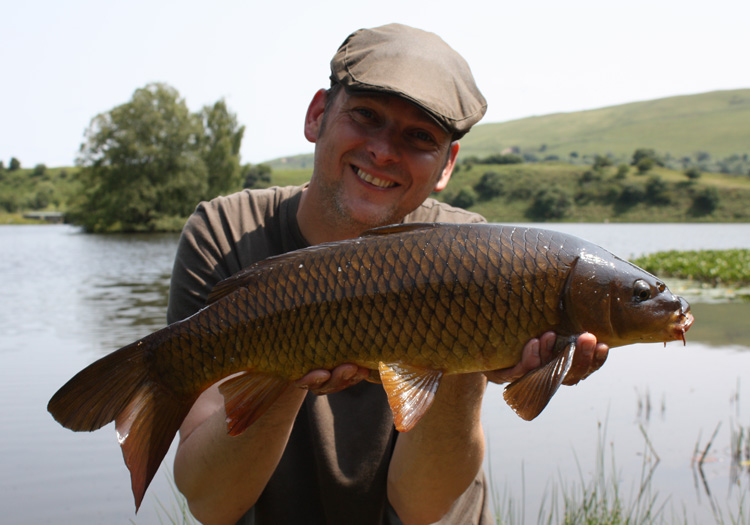
Our oldest UK strains are medieval in origin. Historical evidence suggests that carp were introduced to the UK in the 1400s. At Llyngwyn, where this fish was caught, local folklore says that the fish were introduced by Cistercian monks from the nearby Abbey-Cwm-Hir. This monastery was founded in 1176 and operated until 1536, corroborating our belief that these fish are some of the oldest in the UK. (Note: feral carp typically have a notch behind the head where their shoulders start. This one is doing its best to disprove the rule.)
Making it happen
Once the last copy of Wild Carp was signed, I got on the phone to Matt Tanner and then exchanged messages with Stu. The gist of the conversations went like this:
"Hey, guys," I said, "we talked about it in 2013, the idea of forming a Wild Carp Trust. Let's make it happen!"
"Ooh," they replied, "you mean in a 'we're getting the band back together' sort of way?"
"Exactly," I said, "perhaps not with a 'mission from God' directive, or with the shortsightedness of wearing Blues Brothers sunglasses at night, rather to get 'Boogie Chillun' to do what's right for wild carp."
"Sure thing, Fennel," they replied, "we got Soul, Man; enough to turn this crazy idea into gasoline."
"Boogie-woogie, boys, I'll be back in touch."
And that's how we decided to do it. There and then. To form the Wild Carp Trust.
It wasn't the usual furrowed-brow conversation one would expect for such a serious subject, but was reflective of the euphoric screams of "Yeeeeesssss!!!" that raise the roof of a football stadium when a winning goal is scored.
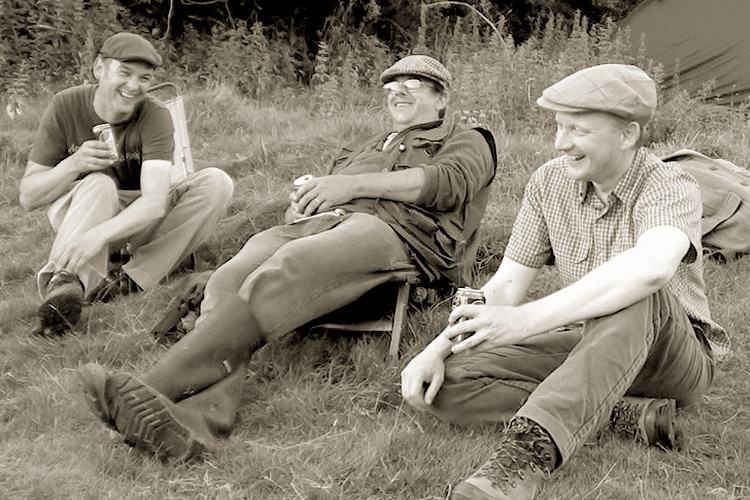
"We got the band together." Stu Harris, Matt Tanner and me in 2013, during our first wild carp adventure together. It was Stu who parped up with the rip-roaringly good idea to form a Wild Carp Trust. He was crawling into his tent – which was half-filled with an airbed and perched on a 45 degree slope – when he mumbled something about inception, then produced a violently loud but rather squeaky 'outburst of air' that, to Matt and I, sounded like he was strangling a mallard. Once we'd stopped laughing and had caught our breath enough to speak, Matt pointed to Stu's feet, which were hanging outside his tent and kicking about like a frog on its wedding night, then said, "It sounds quackers, but I reckon he's onto something there!"
The Wild Carp Trust: please get involved
Discussions to form the Wild Carp Trust are progressing well. Initial conversations, between Matt, Stu, Steve and I, have centred around the 'what, how, who and when' needed to form and manage the organisation. Mostly we've discussed to meet our objectives, presented here in priority order:
- Conserve our oldest strains of carp (find them, protect them, establish conservation pools and stock ponds with breeding programmes, provide funding and advice for others wishing to restore, maintain or create wild carp pools and populations).
- Educate people about the history of these fish, what these oldest strains of carp are and look like, why they're important as a heritage strain, how they're threatened and why they're worthy of conservation (research, articles, publications, advice to clubs and fishery owners)
- Champion the wild carp – promote it as a strain of fish of historic importance and excellent sporting quality to the angler (through articles, films, podcasts, books, website, social media) and defend it against those individuals and organisations who would seek to replace it with larger growing strains of carp.
- Celebrate this wonderful fish (fishing events, socials, awards for wild carp champions).
So we're very much in the early stages of scoping out the potential workings of the organisation. The main 'ask' right now is for you to provide your feedback as to whether you believe that the Wild Carp Trust is something you'd like to join, and if so whether and how you'd like to help us in establishing and running it. Indeed, we'd love to hear your thoughts and ideas of what the organisation should look like, how it should operate, and what we'll need to do collectively to ensure its success.
Please contact me, or comment in the form below, or join the discussions over at the Wild Carp Trust Facebook Group.
Proposed logo for the Wild Carp Trust
Below is my proposed logo for the Wild Carp Trust. The fish within it – our totem – is the perfect 'classic' shape for a wildie. It was drawn from a very old photo given to me by wild carp supremo Mike Winter, of a wild carp from a Norman fishpond. The pond had been enlarged from an earlier Roman fishpond and he liked the idea that these fish might have survived throughout. Of course, both Mike and I knew that there's no evidence of carp being introduced to the UK prior to the late thirteenth or early fourteenth centuries. But it doesn't harm us to dream. As James Allen, author of As a Man Thinketh, said, "Dream lofty dreams, and as you dream, so you shall become. Your vision is the promise of what you shall one day be; your ideal is the prophecy of what you shall at last unveil."
So here's the unveiling of a logo that unites us in the dream of finding, conserving, and fishing for medieval strains of UK carp, and potentially older ones overseas. Our mission: to "celebrate, champion, educate, and conserve." In that respect, it's a badge of honour.
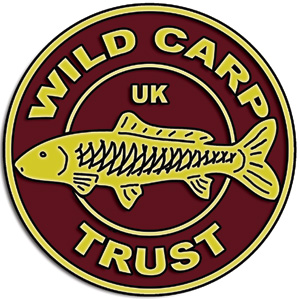
Proposed logo for the Wild Carp Trust. It's the original version, as featured in my book, with the 'UK' bit in it. The country reference was later removed when I became aware of the international appeal of wild carp. The carp shown is the ideal shape of a wildie. It was drawn from a picture of a wild carp caught by Mike Winter from a Roman/Norman fishpond.
What about the colour for the Wild Carp Trust logo? It's a Priory red for now, but could be anything:

The Wild Carp Trust logo works well when large or small, and would lend itself nicely to being a pin badge, sew-on badge, key fob, or car sticker. Maybe even a decal for a rod?
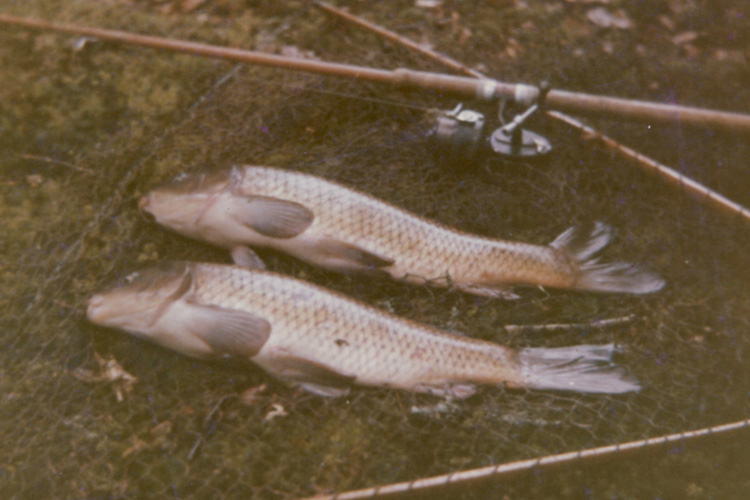
The photo of the wild carp caught by Mike Winter, from which the Wild Carp Trust logo was created. Mike gave me this picture, saying, "THIS is what you're looking for!"
'One for all' - the international appeal of wild carp
The conservation of wild carp, and formation and running of an organisation to help them, is something bigger than me or Fennel's Priory. It exists in the hearts, souls, passions and actions of everyone who loves wild carp.
Sure, Matt, Stu and I had the vision, and still have lots of ideas about how the Wild Carp Trust could work, but it will and should evolve through the collective ideas and energy of wild carp enthusiasts everywhere.
I anticipate there being lots of questions about the provenance and appeal of wild carp internationally. While most of our focus to date has been to research and protect our oldest UK strains of wild carp, it's likely that older strains exist overseas. This excites me, as the wild carp hunter is also part archaeologist (albeit seeking a living archaeology) following the historical trail back to those carp bred and transported by Cistercian monks and, before them, the Romans who first took carp from the Danube, bred them in captivity, and then transported them around their empire.
Perhaps, somewhere in the Mediterranean region, maybe in a remote mountain pond or river, the descendants of those Roman fish remain – uncultivated – to become our Holy Grail? What an adventure that would be to search for and find them!
A promise to help wild carp
I will do everything I can to start and incubate things here until the Wild Carp Trust has its own momentum. Then I will continue to lend my support in helping to shape and form its voice through writing and publishing, and through whatever leadership or coordination is necessary. And, of course, the conservation project at Cowslip Pool will ensure things remain very real.
Who knows, in a few years' time, the Wild Carp Trust could own or rent several waters; have dedicated stock ponds with brood fish; be holding its own events and expeditions in search of wild carp; be investing in desk and field research; be high profile and easily accessible for those who need its help; and be publishing its own magazines, newsletters, films and books in glorious celebration of wild carp. Ultimately I hope that the Wild Carp Trust will have protected and secured the futures of our oldest strains of wildies for subsequent generations of conservationists and anglers to enjoy.
Together, let's make this wonderful vision happen – for the wild carp and everything that these incredibly special fish represent.
Thank you
Fennel
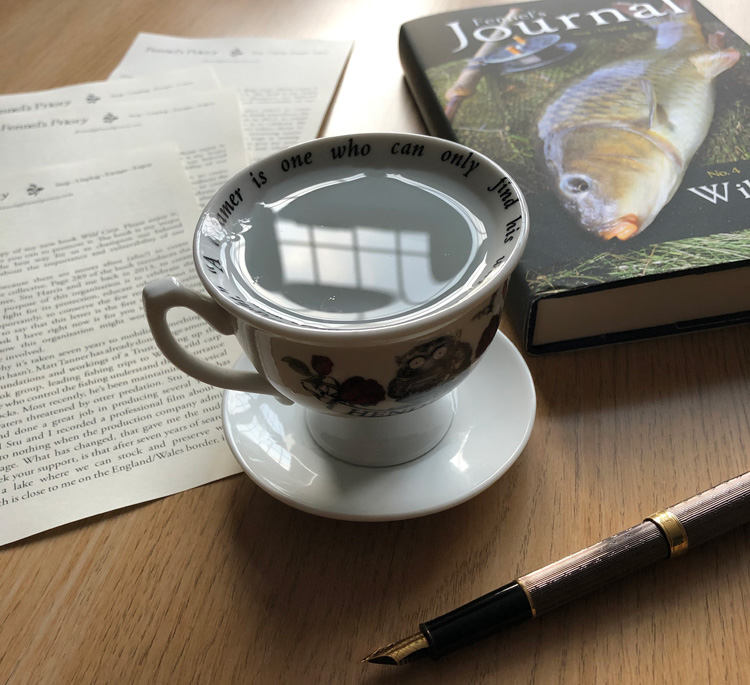
Celebrating a very good idea about forming the Wild Carp Trust, with a 'Mrs H Six-Shot Gin Martini' sipped as the last of the first batch of books is signed. The Hendricks Gin teacup has, around its rim, the Oscar Wilde quote: "A dreamer is one who can only find his way home by moonlight." Here's hoping that the idea of forming a Wild Carp Trust isn't lunacy, rather the light that brightens our otherwise dark times.
Wild Carp: the book that's serving as the catalyst for the formation of the Wild Carp Trust
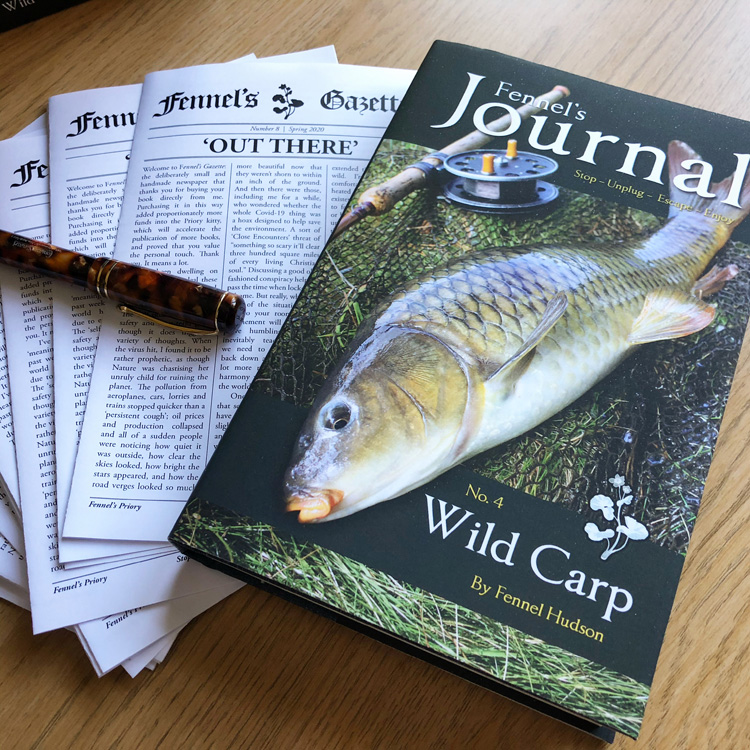
Here's the author's copy of my new book Wild Carp, which includes a plea for wild carp conservation. The book describes my twenty-year quest (from 1989 to 2009) to find and fish for the UK's oldest wild carp bloodlines. It began with moats, monastery pools, farm ponds and estate lakes, and ended with me exploring some of the most magically 'lost' and secret wild carp waters in our land.
Inevitably there will be a follow-up book that continues the adventure, which I hope will centre on the activities and achievements of the Wild Carp Trust.
This blog about the origins and formation of the Wild Carp Trust is an extended version of the Summer 2020 edition of Fennel's Gazette, provided free inside books purchased directly from this website.



